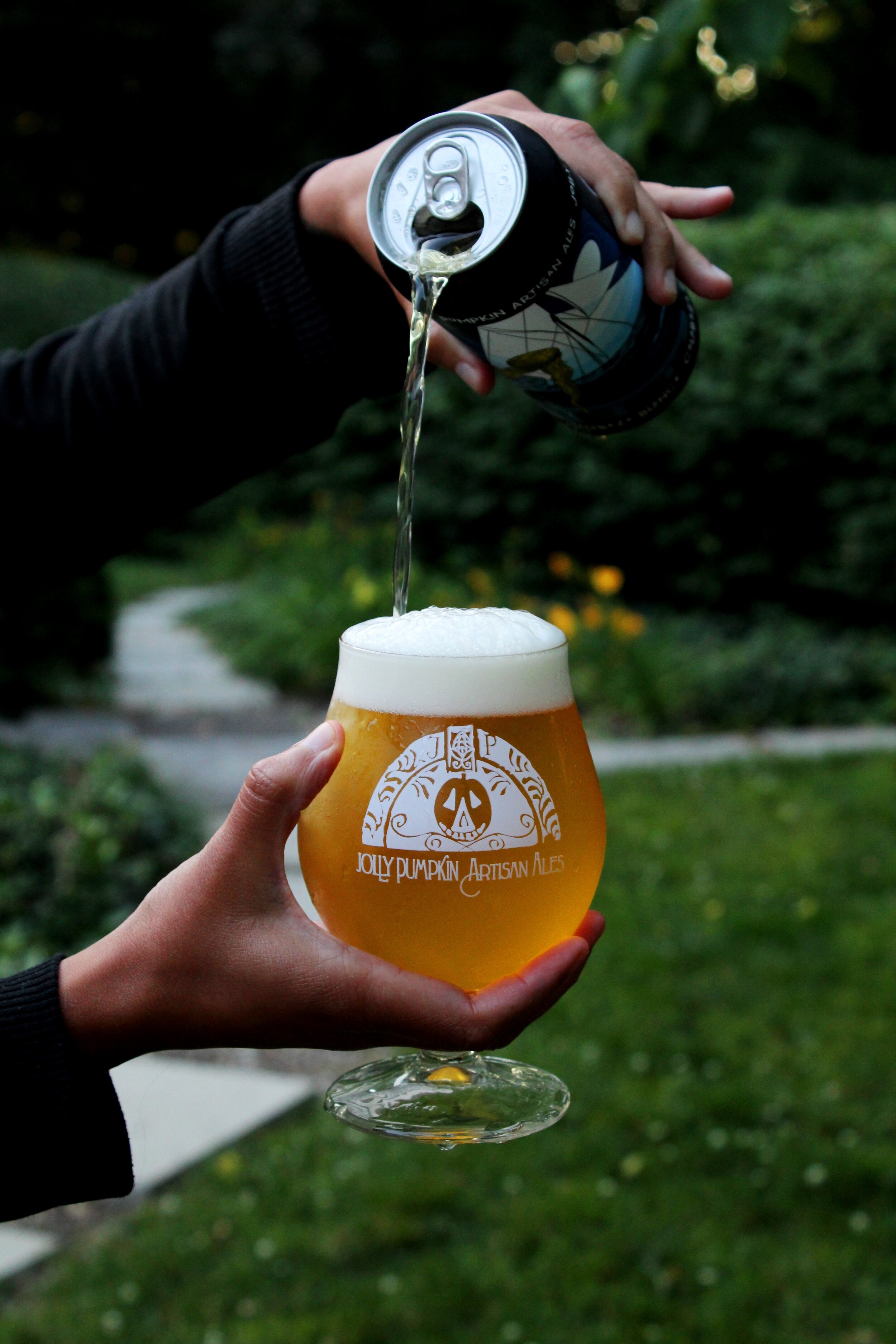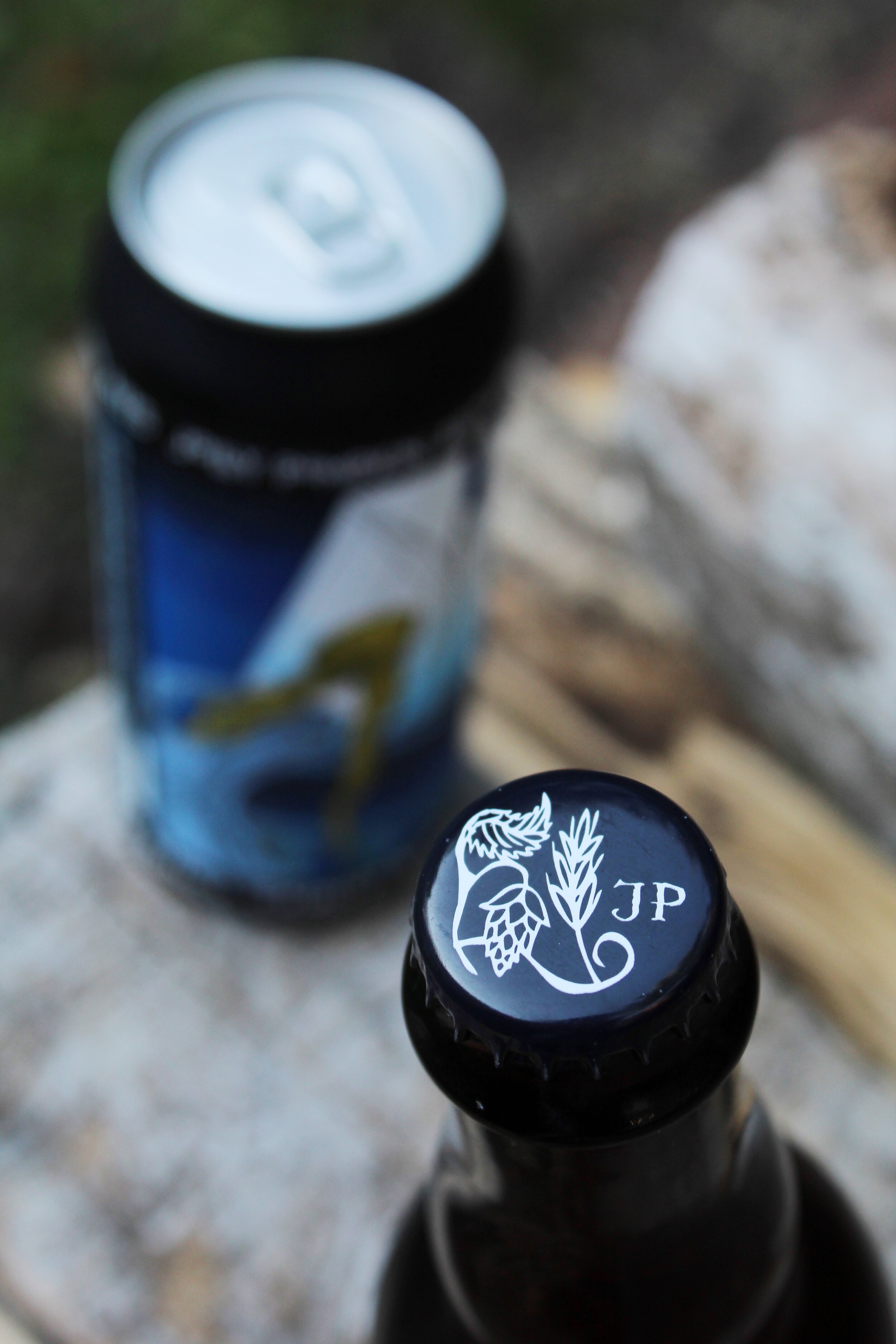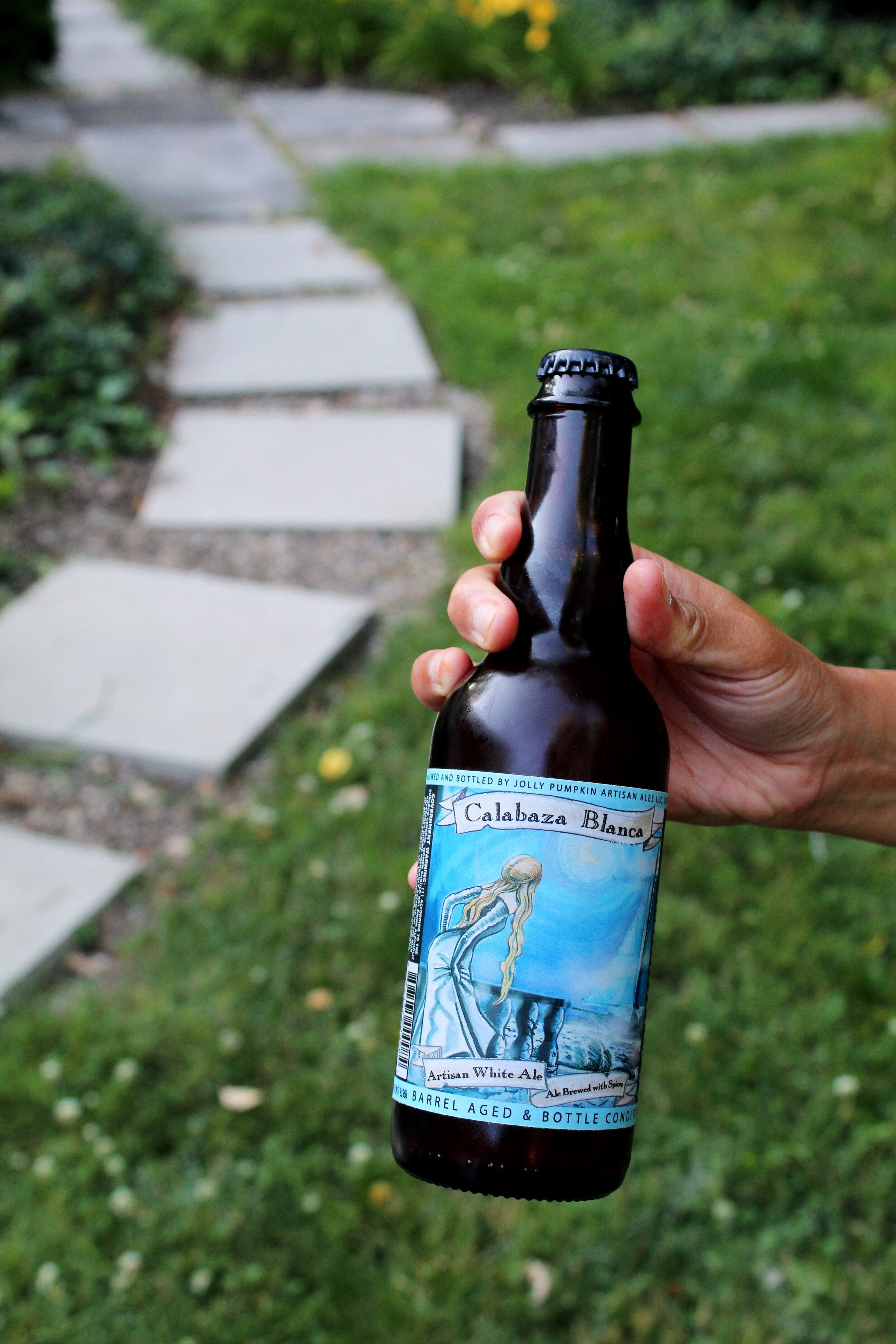On a Wind-Tossed Sea — Behind Jolly Pumpkin’s Calabaza Blanca
Jolly Pumpkin Calabaza Blanca was the first sour beer I ever tasted. When I first bought it in 2007 I didn’t even know sour beer was a thing—I just knew I’d never seen a beer label that looked like art before. And that was enough to land a couple of large bottles in my shopping cart.
At home, my eyes kept returning to the nighttime tableau on the matte label. A hazy crescent moon and a sky awash in brushstroke blues with flecks of amethyst; a white-sailed ship emerging from the fog on a frothy sea, and a woman with hair tumbling to her waist leaning over a balustrade in an evening dress, staring longingly over the water. I had no idea what it meant, but the beer, like its vessel, was beautiful, and it began my love for both Belgian and sour ales.
Photography by David Nilsen
It’s a common testimony to the Michigan brewery. When Ron Jeffries and his wife Laurie launched Jolly Pumpkin Artisan Ales in 2004, they were the first 100% sour, wood-aged brewery in the United States. There were other breweries producing beers this way—New Belgium, Russian River—but always as a curiosity, a prestige line to accompany a portfolio of more conventional beers. Jolly Pumpkin set sail on a ship made of oak and powered by wild microflora, and if it didn’t carry them to a tropical paradise, they’d be lost at sea. Thankfully, they stayed true to their course and influenced a generation of American beer brewers and drinkers along the way.
Before he set up Jolly Pumpkin, Ron had been brewing conventional styles like pale ale and stout in brewpubs [including Grizzly Peak Brewing Co. in Ann Arbor, Michigan] for over a decade, but sour beer was a new endeavour. After tasting a bottle from Belgium’s Cantillon, he was certain these esoteric beers could catch on in the U.S.
“We thought it would be a no-brainer,” he recalls with a wry grin. “They’re delicious and tart and no one was doing them. But it turned out to be a really hard sell. We got so many calls from beer people saying, ‘Hey, I think you have an infection problem at your brewery.’”
Ironically, Jolly Pumpkin didn’t have nearly the infection problem they wanted at first. Ron has never pitched a mixed culture, and since day one has depended upon resident microflora in his barrels and foeders to provide sour and funky character. It took about a year before those qualities began to develop in his beers.
“I was just counting on good yeast showing up,” Ron says. “I recall hearing from Jean Van Roy [of Cantillon] that there was no reason those beers could only be made in the Senne Valley. The wild yeast were out there. I took a leap of faith.”
It’s a leap they continue to make; they’ve still never cultured what Ron calls, “the Jolly Pumpkin soup.”
“The only way we inoculate a new piece of wood is by putting sour beer in it,” Jolly Pumpkin’s cellar manager Kurt Lymburner tells me. “We don’t have a big lab with our culture sitting in a funk tank [a vessel used to hold and keep alive a brewery’s mixed culture of yeasts (wild or otherwise) and bacteria which can be used to inoculate subsequent batches of beer]. Technically, all of our tanks are funk tanks.”
“Sometimes we’ll [package] a full tank and that’s that, sometimes it’s a blend of two, three, or four different vessels to get a final Blanca we’re happy with,” he says, explaining how different batches of Calabaza Blanca are currently ageing in eight foeders of various sizes. “I still have a Blanca in tank from last March, and we’ve pulled [beer] out of it three or four times.”
This blending process requires topping off foeders with new beer, which leads to an unofficial solera inoculation. After a primary fermentation with a Belgian ale strain, it’s up to the wood and the older beer in each vessel to provide the spark of life.
“As of the first quarter of 2020, we have 3,890 [US] barrels [around 450,000 litres] of beer currently in oak,” observes Ron. “We’re heavily invested in oak.”
***
Calabaza Blanca and Bam Biere (a lightly tart farmhouse beer) were developed 15 years ago as quicker beers that could be turned out in 2-3 months rather than a year or more for brands like La Roja (a sour amber ale based on Flanders Red Ale) or Oro de Calabaza (a strong golden sour ale). They were a way to generate cash flow while longer-ageing beers developed. They ended up becoming the core of the brand, and the diplomatic ambassadors that introduced many of us to the world of sour beer.
“It’s not even a thing that needs said, it’s just a fact: sour beer in America wouldn’t be what it is without what Ron did,” Brett Smith, founder of Branch & Bone Artisan Ales in Ohio—whose own mixed-fermentation efforts have won national awards—says. “Our mixed culture at Branch & Bone has a lot of stuff in it from my homebrewing days, and there’s definitely some Jolly Pumpkin dregs in there.”
““We got so many calls from beer people saying, ‘Hey, I think you have an infection problem at your brewery.’””
Brett cites what many of us recall from those early days as well: the importance of Jolly Pumpkin’s art direction.
“Beer packaging just wasn’t like that back in the 2000s,” he recalls. “It was all low-brow humour and plain graphics. Jolly Pumpkin were commissioning these full art pieces.”
Ron tapped Ann Arbor-based tattoo artist Adam Forman to design the label art for Jolly Pumpkin’s beers, and he continued in that role until 2019.
“Adam is a real high energy guy,” he explains. “I’d come to him with a beer name and he’d come back with some drawings and we’d go from there. But that’s just the boring, rote mechanics of how they came to be. Once it’s a piece of art—and those labels are art—the interpretation is in who views it. Over the years, I’ve had lots of people tell me what the Calabaza Blanca label means to them and who the woman is and whom she’s waiting for. You write your own story about it.”
“I was thinking about romantic notions, the idea of yearning, and that was at the heart of that label,” Forman recalls all these years later. “I enjoyed the idea of images where you saw a person co-experiencing a scene with you. That was a fun way to invite people into the beer.”
Forman sees a synergy in the way he and Jeffries both approached their different art forms.
“We wanted to ask provocative questions with what we produced,” He reflects. “Ron does that as a brewer, and I do that as an artist and illustrator. Illustrating is like writing: you try to see as much of the pattern as you can, put yourself in the middle of that pattern, and then choose a view to make sense of it.”
As sales of large format bottles have cratered across the industry, Jolly Pumpkin have moved their core brands to 4-packs of 16 oz cans. The artwork has been subtly adapted to the new vessel but retains its eye-catching air of mystery. And sales are up. Ron cites being able to take cans to the beach as a driving factor, a cogent point for a brewery built around a tropical art theme and operating in a state with coastline on four of the five Great Lakes.
***
When I look back at the formative beers of my early adulthood, I can remember tasting them for the first time, and what I thought of them: Bell’s Two Hearted Ale; Great Lakes Edmund Fitzgerald; Sierra Nevada Pale Ale. But try as I may, I can’t remember what I tasted in Calabaza Blanca that very first time. I’ve wondered if my mind just set it aside then, kept it safe. To look too plainly at the beer’s weirdness in that first taste would have forced a qualitative opinion I likely wasn’t ready to tender. I know it wasn’t long before I chose to love it, and I know choosing that made it true. Sometimes that’s how our tastes develop. Once those first bottles were empty, I was in love with sour beer, with Belgian beer, and with Jolly Pumpkin Artisan Ales.
As I sit in my garden patio all these years later at magic hour, the beer’s hazy yellow shimmers in the soft light like antique gold. Blanca isn’t a complicated pleasure compared to some of its brethren, but it is earnest and clear in its presentation, like a melody cleanly played on a single instrument. Notes of lemon candy, faint clove that could be oak or yeast, a bit of sweet orange peel, a touch of deeper spice, like white pepper. Soft wheat blanketing a dry and gently acidic body. It’s a slight thing, but it holds its own, like that sailboat on the wind-tossed sea, like that lady waiting at the rail, like that quavering sliver of a moon in the night sky.



















